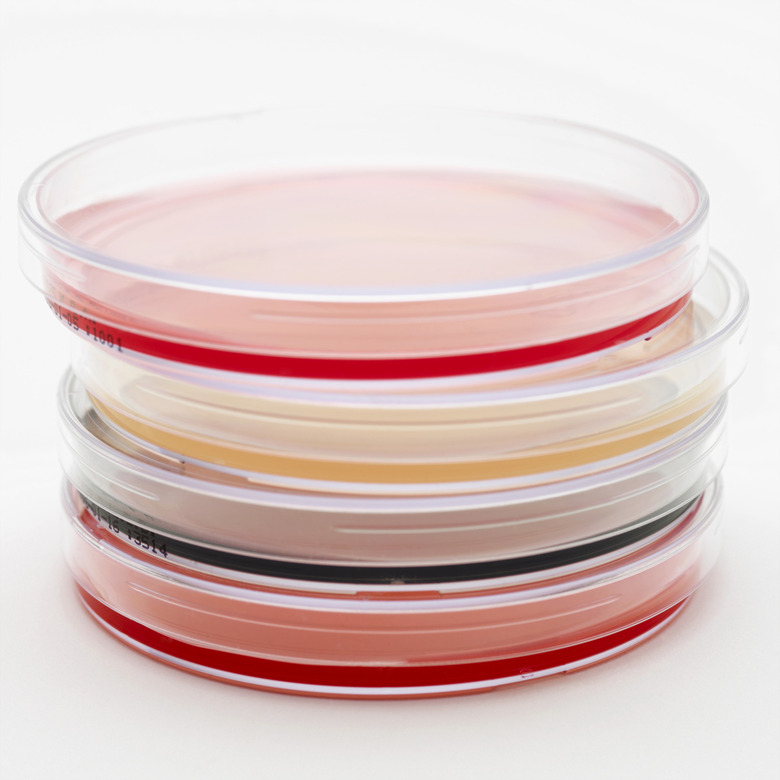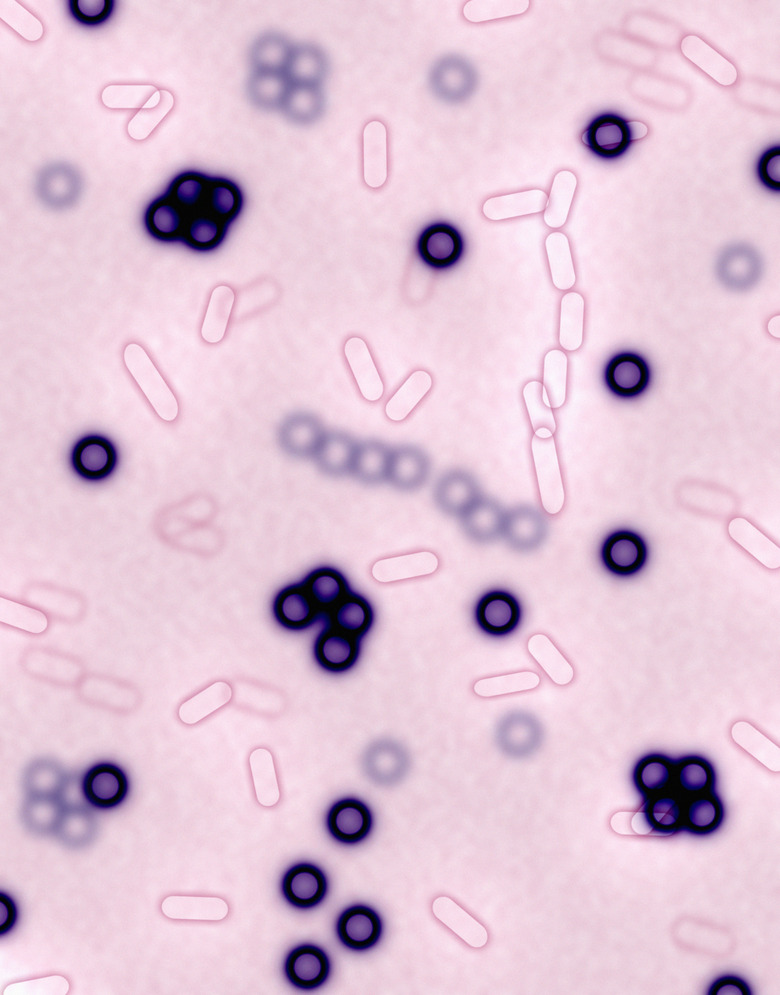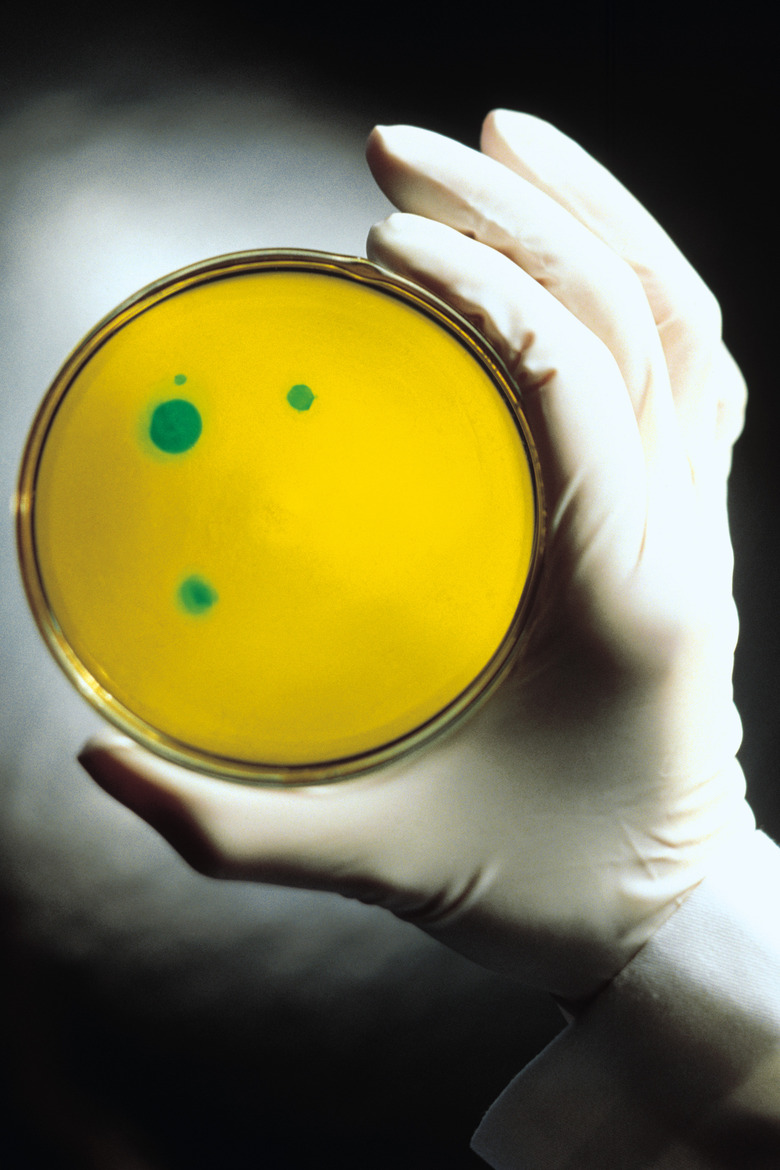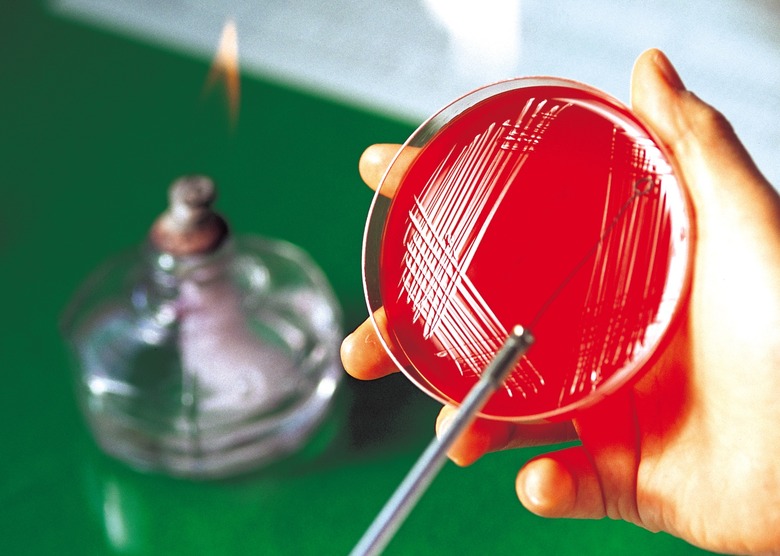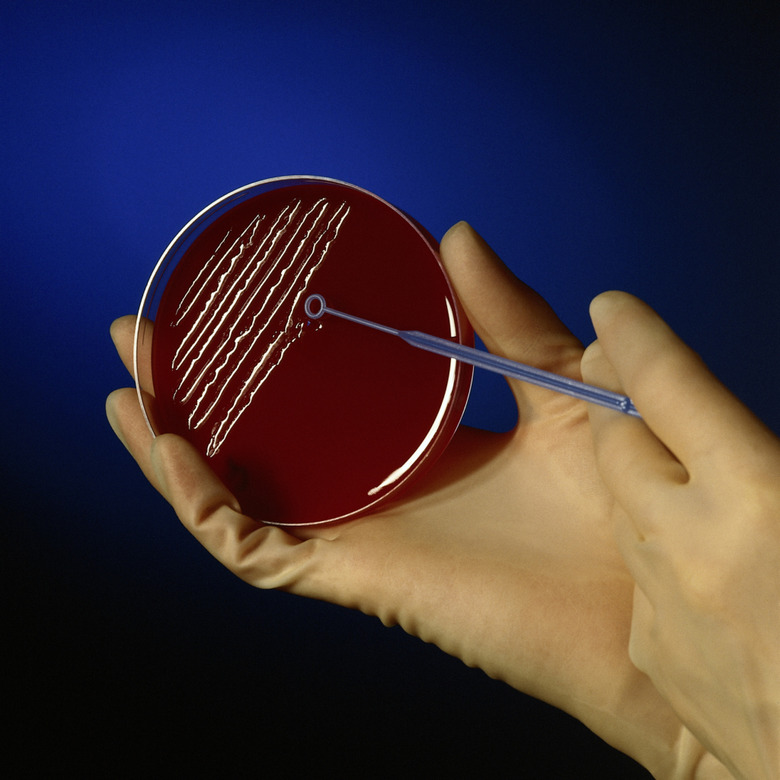Technique To Separate Bacteria In A Mixed Culture
Microbiologists, geneticists and molecular biologists use bacterial cultures for discovering life's secrets. Microbiologists study bacteria to discover new antibiotics for treating infections. Geneticists use bacteria to determine whether chemicals may have carcinogenic properties. Molecular biologists study the biochemical pathways of cellular processes to understand the functions of enzymes we have in common with bacteria. As varied as the studies are, all three sciences isolate bacterial cultures using the same technique: agar plate streaking.
Microbe Basics
Microbe Basics
Microbes are single-celled organisms such as bacteria and fungi. These organisms reproduce quickly and are easy to grow, making them especially useful to study. When a potentially new microbe is discovered in nature, a sample is placed into a growth media called a "broth." Broths consist of sterilized water, salts, sugars and other nutrients that will promote rapid bacterial growth in a flask during incubation. However, more often than not, the broth will contain more than one type of bacteria. To isolate a single bacterium, the scientist will spread a small sample of the broth over a semisolid agar plate using a microbial technique called "streaking."
Agar Plates
Agar Plates
Agar plates are semi-transparent, semi-solid gels consisting of seaweed and specific concentrations of nutrients. The usefulness of agar lies in the fact that it provides a smooth, soft surface for growing bacteria. When a scientist places a single bacterium on agar, it will reproduce by doubling itself thousands of time and will appear as a small colony of single cells.
Bacteria Streaking Tools
Bacteria Streaking Tools
Bacteria streaking requires three tools: an agar plate, an alcohol burner and a wire loop. The agar plate is the growth media to which the bacteria are transferred after growing in broth. The alcohol burner is a small, alcohol-filled lamp for sterilizing the wire loop — a long, slender handle with a small loop of fire-resistant wire attached at one end. The loop will hold a tiny drop of bacteria-filled broth when transferring the bacteria from the broth to the agar plate.
Bacteria Streaking Process
Bacteria Streaking Process
Streaking bacteria across an agar plate is simple, but you must perform this step correctly or you will not isolate separate colonies. Heat the loop over the alcohol burner to sterilize the wire, then dip the tip of the loop into the broth. Streak the loop tip back and forth several times over a quarter of the agar plate. Sterilize the loop again, and streak across and perpendicular to the first streaks. Move the loop back and forth a few times over a new section of the plate. Sterilize the tip. streak lightly across the last streaked section one time and move the loop back and forth several times. The streaking is diluting the initial drop of broth to a point where the last streaks will contain single colonies. Place the plate in an incubator or on a tabletop at room temperature, and wait for the colonies to grow overnight. Single colonies in the last streak will become isolated colonies of a single bacterium.
Cite This Article
MLA
Boyer, Timothy. "Technique To Separate Bacteria In A Mixed Culture" sciencing.com, https://www.sciencing.com/technique-separate-bacteria-mixed-culture-10056515/. 24 April 2017.
APA
Boyer, Timothy. (2017, April 24). Technique To Separate Bacteria In A Mixed Culture. sciencing.com. Retrieved from https://www.sciencing.com/technique-separate-bacteria-mixed-culture-10056515/
Chicago
Boyer, Timothy. Technique To Separate Bacteria In A Mixed Culture last modified August 30, 2022. https://www.sciencing.com/technique-separate-bacteria-mixed-culture-10056515/
